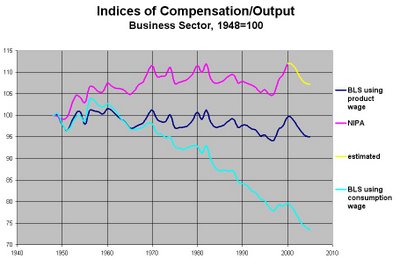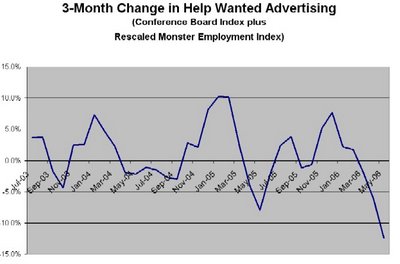My economic intuition tells me that the budget deficit is bad and that we should make every effort to reduce it as much as possible, as soon as possible. That’s what all sensible economists think, isn’t it? The only economists who disagree are silly economists. (Politically, they are found on the right, the left, and the center, but they have silliness in common.) Yet when I think about this topic logically, I’m in serious danger of turning into a silly economist.
The US deficit clearly helped the world economy during the first half of this decade. What would have happened if the US hadn’t run a fiscal deficit from 2001 to 2005? The Asian countries, presumably, would still have bid the dollar up aggressively in order to ensure adequate demand; indeed, they would have had to do so even more aggressively to offset the weaker demand at any given exchange rate. Or possibly they would have given up, the Japanese economy would still be stagnating, and it would be joined in deflation by China. With the meager US demand going to keep the Asian countries out of severe deflation, there would be little left over for Europe and the rest of the world. The ECB would have brought rates down to zero, and Europe would be in a serious depression. Without a fiscal stimulus, a greater monetary stimulus would have been required to keep the US economy afloat: rates here would have gone to zero, and log cabins without indoor plumbing would be selling for seven digits. Ben Bernanke might well even have occasion to fuel up his helicopter.
The US deficit may still be helping the world economy. What will happen, then, if the US deficit disappears in the immediate future? If we’re lucky, the self-sustaining upward trends in private sector demand in the US, Europe, China, Japan, and elsewhere will continue. But there’s good reason to think we may not be so lucky. In the US, the end of the housing boom – if accompanied by a fiscal contraction – could send the economy back into recession, and we could end up in a position similar to where we were a few years ago. Hopefully, the Fed could succeed in replacing the stimulus, but the result would be a weaker dollar, wreaking havoc with the economies of those nations – such as our major trading partner, the UK – whose currencies trade freely against the dollar. Without the US eager to absorb it, Asia’s surplus of savings would be forced down the world’s throat, possibly inducing a worldwide recession and an international liquidity trap.
Running a (larger) deficit now is cheaper in the long run than not running one. It is often objected that our children will have to pay for today’s deficit. But in fact, it will be easier for them to pay than for us to pay now. The reason is that the US economy is growing at a rate greater than the interest rate the government pays on its debt. Therefore, for any marginal increase in the deficit from (or up to) today’s level, the tax rate increase necessary to pay it off in the future will be less than the tax rate increase necessary to eliminate it today.
Even if it weren’t cheaper, running a deficit would be economically efficient. Even if the government’s interest rate were higher than the growth rate, it would still almost certainly be lower than the marginal subjective discount rate for the average American. Given that many Americans are willing to borrow money at credit card interest rates, it seems likely that most would be willing to borrow even more if they could pay what the government pays. In fact, this behavior would seem to be a rational response to the income growth profiles expected by younger people. Aren’t they better off if the government borrows on their behalf at a very low interest rate, cuts their taxes today, and promises to raise their taxes, if necessary, later, when they can afford to repay?
This isn’t exactly “opposite day,” because I’m not quite ready to declare that my alter ego (author of the last 4 paragraphs) is definitely wrong. I still think he’s probably wrong, but there’s a real challenge here for sensible economists. Anybody want to take up the challenge?
Labels: budget deficit, economics, government spending, macroeconomics, public finance, taxes



